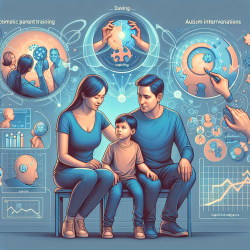Introduction
In the evolving landscape of healthcare, the integration of evolutionary medicine (EM) into various disciplines, including speech-language pathology, offers a promising pathway to enhance therapeutic outcomes. As professionals committed to improving children's communication abilities, it is crucial to understand how evolutionary principles can inform and transform our practices. This blog explores the potential of incorporating EM into speech-language pathology, drawing insights from the research article "The Importance of Evolutionary Medicine in Developing Countries," which highlights the relevance of EM in medical education and public health.
The Role of Evolutionary Medicine
Evolutionary medicine provides a framework for understanding why certain health conditions persist and how they can be addressed. By examining the evolutionary history of human biology, EM offers explanations for the prevalence of diseases and disorders. This perspective is particularly relevant in developing countries like Pakistan, where communicable and non-communicable diseases pose significant challenges. The research article emphasizes the need for incorporating EM into medical education to equip future healthcare professionals with the knowledge to tackle these issues effectively.
Application in Speech-Language Pathology
For speech-language pathologists, understanding the evolutionary basis of communication disorders can lead to more effective interventions. For instance, the evolutionary perspective on language development can shed light on why certain speech and language disorders occur and how they can be addressed. By integrating EM principles, practitioners can develop data-driven strategies that consider the evolutionary adaptations of human communication.
- Understanding Language Evolution: By studying the evolutionary trajectory of language, speech-language pathologists can gain insights into the underlying causes of communication disorders, leading to more targeted interventions.
- Addressing Genetic Predispositions: EM can help identify genetic factors that contribute to speech and language disorders, allowing for personalized therapy plans that consider individual genetic profiles.
- Enhancing Intervention Strategies: By incorporating EM insights, practitioners can develop innovative approaches to therapy that align with the natural evolutionary adaptations of human communication.
Encouraging Further Research
While the integration of EM into speech-language pathology holds great promise, further research is needed to fully understand its potential impact. Practitioners are encouraged to explore the existing literature on EM and consider how these principles can be applied to their practice. Collaborative efforts between researchers and clinicians can lead to the development of evidence-based interventions that improve outcomes for children with communication disorders.
Conclusion
Incorporating evolutionary medicine into speech-language pathology offers a data-driven approach to enhancing therapeutic outcomes. By understanding the evolutionary basis of communication disorders, practitioners can develop more effective interventions that align with the natural adaptations of human communication. As we strive to create better outcomes for children, embracing the insights of EM can lead to innovative and impactful changes in our practice.
To read the original research paper, please follow this link: The importance of Evolutionary Medicine in developing countries.










